Missed Connections
Presented at Baruch College New Media Art Space | Spring 2015
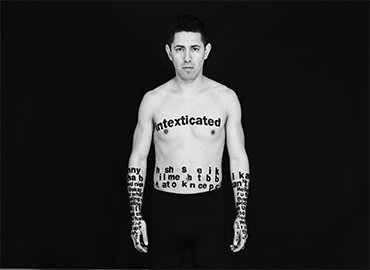
Ivan Calderon
In Intextication art piece, Ivan Calderon transforms himself into a human canvas exploring the effects that texting has on human interaction. Juxtaposing texting with human illness, the artist merges a sequence of pictures to create a video showing jargon language engraved into his skin. The association of a viral illness and its exponential growth expresses the rise of new boundaries in human communication. People get deeply involved in this new parallel world of texting to convey their ideas or feelings. As the video progresses, the artist fades into the dark background. This evokes the idea that humans become detached from reality and instead communicate through the proxy of texting.
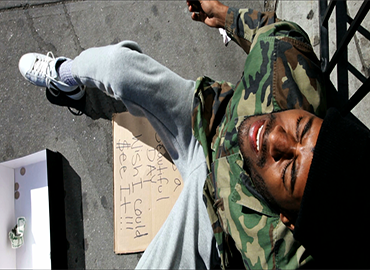
Derek Cuthbert
Social Experiment
In this short film, it portrays how cruel society can be and that people will take advantage of anyone no matter the circumstances. The video shows a blind homeless man on a beautiful day trying to make ends meet. The patrons passing by have other plans and take advantage of the guy.
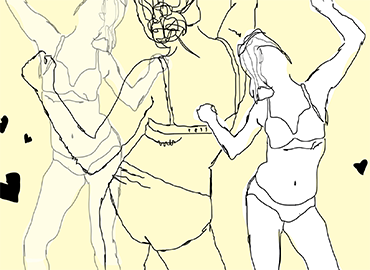
Alyssa D'Angelo
In our culture, women are constantly bombarded with images that portray an unrealistic idea of what it means to be “beautiful.” These images make it too easy for females to tie their own value and self worth to physical appearance That’s What’s Wrong is a series of animated cartoon comics illustrating the effects of beauty standards and sexual objectification that advertisements have on the confidence of females.
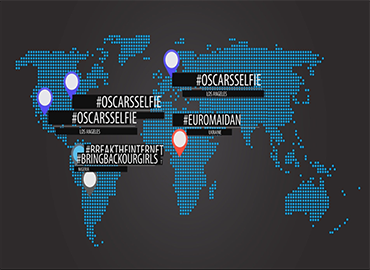
Konstantin Malyshkin
Drawing from the endless stream of social media, Konstantin’s work illustrates the pivotal point where the increase in media coverage of a given event begins to diminish the perceived importance of the topic. Through this hyperpopularity, the event is stripped of any symbolic meaning and dissolved to little more than white noise. Inspired by the works of Edward Tufte, Konstantin screens through geo-tagged Tweets that include culturally relevant hashtags and collects their meta-data. An animated representation of these posts is plotted over a map, culminating in the highest rated Tweets overshadowing all other events. The work’s intro provides context to the piece; the simulated glitch effect, naturally occurring due to a short electrical pulse as a result of a faulty design, comments on the imperfections in our society.
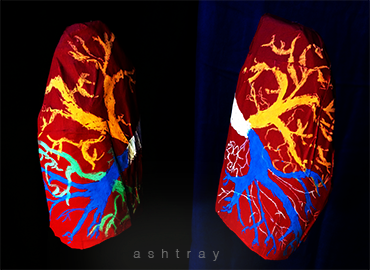
Brenden Mastache
In this work, the severe impact that smoking has on the lungs is showcased through the use of video and sculpture. Decaying over the years, lungs are a vital part of human life; life that millions of people around the world neglect when smoking. The video shows two paper-maché lung sculptures, one of which burns to denote the damage of lung disease. The exhibited sculptures are scented with an intent to create sensory overload using sight, sound, and smell. Following the flames are ashes that make of our bodies an ashtray of our perpetual carelessness.
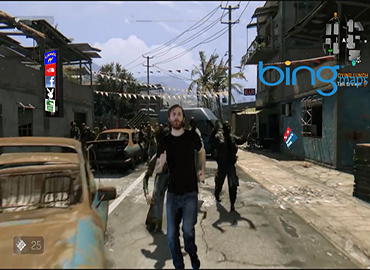
Sam Rella
Branded Undead discusses the addicting nature of brand recognition. The video game used is called Dying Light, a zombie video game. The use of zombies is a metaphor for the mindless nature of the hive-mind due to consumption of brand products caused by the addicting nature and oversaturation of advertising in today’s culture. In the city, it is near impossible to go more than one block without seeing some kind of advertisement. This influences the way people spend their money, often opting to buy brand name products that aren’t necessarily better for the consumer. In the video, there are clearly visible logos that are used to highlight the concept of branding. Sam Rella uses a combination of animation and green screen to superimpose a live action image on top of gameplay from a video game.

Gabriela Rivadeneira
Childnology portrays a contemporary reality in our society about the behavior that children have adopted from adults, when it comes to the use of technological devices. Bringing as a result the lack of children's social interaction and the lack of children's interaction with different environments. Most of the elements of the animation are hand drawn and are put together using stop motion. Colored with crayons, the animation reveals the reactions that a child tends to experience when being exposed to a technological device, vs. when being exposed to non-technological devices.
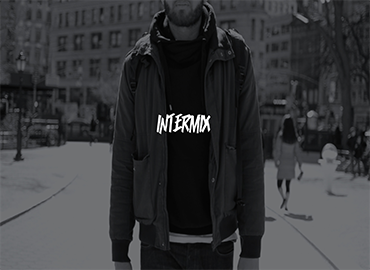
Christian Rodriguez
Christian dares to push against considered norms– mostly where civilization has turned a blind eye. ID is a series of short documentaries depicting the lives of three young adults in New York City. In every piece he highlights the undeniable truth of our generation, from racial profiling to the destructiveness of nightlife. Each story dabbles in the lives of the characters and highlights the environment they belong to due to their situation.
Press Release
NEW YORK, NY- February 4, 2015 – Baruch College presents Missed Connections, a group exhibition of new works by the third cohort to complete the New Media Arts minor in the Department of Fine and Performing Arts in the Weissman School of Arts and Sciences.
The exhibit will run from May 11, 2015 – September 4, 2015 at the New Media Artspace gallery in Baruch’s Library and Information Building, 151 E. 25th Street. There will be an opening reception and casual discussion with the artists for Baruch students on May 11th from 1:30 p.m. to 3:30 p.m. in the New Media Artspace and room 415 of the Library and Information Building. Members of the public who wish to attend may RSVP to profrauch@gmail.com.
The work in this show considers the exchange between individuals and their surroundings. How does the social environment affect the way humans relate to others, as well as themselves? Perhaps the way we interact with our surroundings is influenced by how our surroundings interact with us. Ivan Calderon, Derek Cuthbert, Alyssa D’Angelo, Konstantin Malyshkin, Brenden Mastache, Sam Rella, Gabriela Rivadeneira and Christian Rodriguez created work with these issues in mind. Working in a range of media including video, animation, sculpture, photography and net art, the works by these eight artists are inspired by the city of New York, which gives the artists a unique insight on how humans interact within a multitude of contexts.
On the second floor of the New Media Art Space, we find Brenden Mastache’s Ashtray and Derek Cuthbert’s Blindsided. Derek Cuthbert’s Blindsided portrays how cruel society can be and that people will take advantage of anyone no matter the circumstances. In it a blind and homeless man is panhandling on a beautiful day trying to make ends meet, while people passing by have other plans. In Brenden Mastache’s Ashtray the severe impact that smoking has on the lungs is visualized in video and sculpture. Humans have been smoking as a way of socializing, without measuring the consequences they have on themselves and their surroundings.
The third floor of the New Media Artspace has work by Sam Rella and Alyssa D’Angelo. In Sam Rella’s Branded Undead, he discusses the addicting nature of brand recognition through the use of video and motion graphics. Brands, as now part of our environment, can deviate the way we relate to others and ourselves. In D’Angelo’s That’s What’s Wrong, the comics express the common emotions felt by women who harshly criticize themselves due to the bombardment of the unrealistic beauty standards seen in the media. The issues of beauty and self-esteem have been in our society for centuries, where our insecurities are largely based on the opinions of others with whom we interact.
On the fourth floor, Christian Rodriguez’s Intermix is a series of short documentaries depicting the lives of three young adults in New York City. In every piece he highlights the undeniable truth of our generation, from racial profiling to the destructiveness of nightlife. Also on the fourth floor, Gabriela Rivadeneira’s Child-nology portrays a contemporary reality in our society where the adult behavior of children using technological devices hinders their social growth. Colored with crayons, her animation reveals the reactions that a child tends to experience when being exposed to a technological device, in contrast to being exposed to non-technological devices.
Ivan Calderon’s Intextication and Konstantin Malyshkin’s Problem Solved are on the fifth floor. Through video and photographs, Calderon transforms himself into a human canvas to explore the effects that texting is having on human interaction. In this work he demonstrates how people get intensely involved on the texting and cyber world to convey their ideas or feelings as opposed to face-to-face interaction. In Konstantin Malyshkin’s Problem Solved, he illustrates the geographical spread of ideas and thoughts across the nation through social media platforms. Inspired by the works of Edward Tufte, Konstantin screens through geo-tagged Tweets that include culturally relevant hashtags and collects their meta-data.
***
Gallery Location: New Media Artspace at Baruch College, Library and Information Building, 151 E. 25th Street, New York, NY 10010
Gallery Hours: The New Media Artspace is open to the CUNY community during regular library hours. Members of the public may request access to the New Media Artspace at the security desk at the second floor entrance to the library. For this week's public hours, please check the gallery website: www.newmediartspace.info or dial a docent at 626-312-1664.
The New Media Artspace is a teaching exhibition space in the Department of Fine and Performing Arts at Baruch College, CUNY. Housed in the Newman Library, the New Media Artspace showcases curated experimental media and interdisciplinary artworks by international artists, students, alumni, and faculty.
###
About Baruch College:
Baruch College is a senior college in the City University of New York (CUNY)) with a total enrollment of more than 17,000 students, who represent 160 countries and speak more than 100 languages. Ranked among the top 15% of U.S. colleges and the No. 4 public regional university, Baruch College is regularly recognized as among the most ethnically diverse colleges in the country. As a public institution with a tradition of academic excellence, Baruch College offers accessibility and opportunity for students from every corner of New York City and from around the world. For more about Baruch College, go to http://www.baruch.cuny.edu/.
Media Contacts:
Manny Romero, (646) 660-6141, manuel.romero@baruch.cuny.edu
Celene McDermott, (646) 660-6134, celene.mcdermott@baruch.cuny.edu